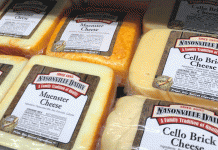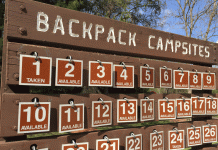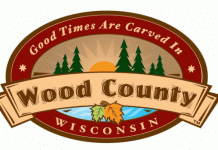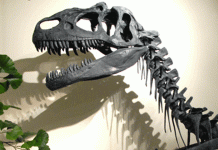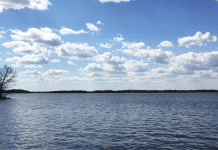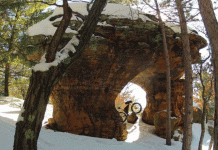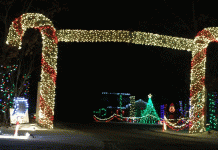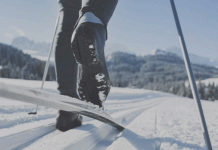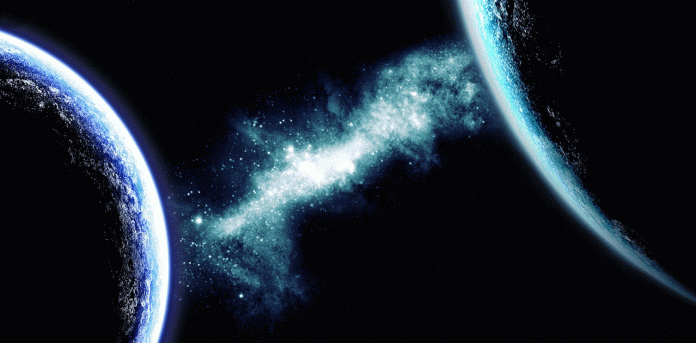Learn More About the Night Sky and Astronomy Through UWSP Public Programs
Curious about the night sky? Take advantage of UW-Stevens Point’s free public programs at the Allen F. Blocher planetarium, which cover a range of topics that appeal to all ages. Open during the regular academic year, the facilities are open on Sundays to the public. See the list below for the Fall 2018 semester schedule.
Doors open half an hour before the show, and the sixty seats are first come, first serve. Large groups of 15 or more should schedule a special showing by appointment for $25 a group. Cal 715-346-2139 or submit the online form. Most programs begin promptly at 2 p.m. and last an hour. Regularly scheduled programs are free as a public service.
Also available are public are the half-hour Night Sky programs on Mondays at 8 p.m., which looks at the current night sky. From 8:30-10 p.m., the public can visit the Arthur J. Pejsa Observatory on clear Monday nights during the semester to look through the Meade 0.4-m telescope. Temperatures are the same as outside, so be sure to dress warmly. The observatory will be closed if the temperature drops below 10 degrees Fahrenheit.
Potential visitors can call the automated attendant at 715-346-2208 and select the observatory number (6) to learn whether the observatory will be open.
The planetarium and observatory are located on the second and fourth floor of the Science Building on the UW-Stevens Point campus. Both facilities are closed during student breaks. The Science building (2001 Fourth Ave) is at the southwest corner of Fourth Avenue and Reserve Streets.
At 8:30 p.m., visitors are invited to go to the Arthur J. Pejsa Observatory and enjoy real sky telescopic observations using our 16-inch computer-controlled telescope, weather permitting. Typical targets include: the Moon, planets, stars, stellar clusters, nebulae, galaxies.
For further information, call 715-346-2208, or visit the website. Parking is in Lots D or E, or along Stanley Street.
Fall 2018 Semester Schedule
Endless Horizon
October 7, 14 (Wisconsin Science Festival), October 21 & 28
Join Patrick Stewart and explore the unique relationships between scientific discoveries, advances in science theory, technology breakthroughs, and the concept of the universe. Highlighted are Newton, telescopes, and space probes. This program takes you from the world exploration of the 1500’s to today where along the way you’ll discover how devices were being created that would profoundly influence the course of history.
For example, by 1903 the Wright brothers launched their first flying machine; in that same year, Tsiolkovsky conceived of a method to launch an artificial satellite into orbit. These technological advances led to space rocketry and solar system exploration. This emergence of technology allowed us to explore our celestial neighbors and helped unlock the secrets of the solar system. Finally by using modern advances in telescopes, we have been able to look out to the furthest expanses of the universe. Stand upon the shoulders of giants and see that our horizon is, indeed, endless.
The Stargazer
November 4, 11 & 18
Narrated by Nichelle Nichols (Lt. Uhura from Star Trek) and Dr. James Kaler (noted stellar astronomer) we take a more personal look at astronomy. Using principles of gravity, the properties of light, and the spectrum; this program explores the very nature of the stars and stellar life cycles.
Winter Wonders (at 2:00 p.m.)
December 2, 9 & 16
Our holiday program, especially for the young, takes a (multicultural) look at the many holiday customs and why the winter solstice was important. The program also describes different religious traditions and takes a look at Christmas story and the star.
Season of Light (at 3:15 p.m.)
December 2, 9 & 16
This delightful multicultural program will lead you through the discovery of many basic astronomy concepts as you explore the holiday traditions of several cultures and religions. Also hear about the origins of many of our modern holiday customs. We conclude with a look at some of the ideas of what the Christmas star was.


